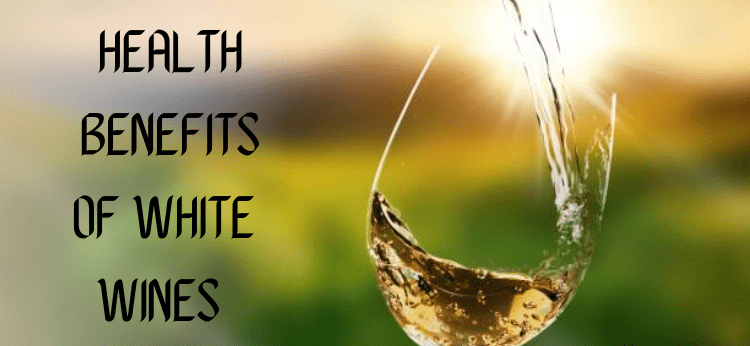Wines have so many different flavors, as well as thousands of subtle differences, accents, and notes in taste, that no two wines are exactly the same. Even yearly vintages taste different. However, there are two well-known categories: white wine and red wine.
White wines associates with a more acidic, floral, and fruity aspect of wine, with lighter flavours and subtle overtones whereas red wines often associate with stronger, bolder tastes, with strong, rich flavours.
Most casual wine drinkers are unaware of the numerous differences between white and red wine, assuming that the distinctions are simply due to the use of different grapes. True, the two types of wine use different grapes in general, but they also use different parts of the grape, different processes, and different chemical compounds (which correspond directly to a wine’s nutrition component), all of which combine to give wines their distinct flavour.
Making of White Wine

In theory, making wine is quite simple. A winemaker takes freshly harvested grapes, presses the juice from them, ferments the juice with yeast, allows the wine to mature in a wooden barrel, and then bottles it.
Even though grape juice and yeast has the only ingredients required, the process takes unexpected twists and turns at each stage.
Procedure for making white wine
Harvesting the grapes
Making high-quality wine requires freshness. Early in the morning, when the grapes are still chilly from the night’s air, is when they have harvested. Wineries harvest their grapes at different times of the year depending on where they are located; those north of the equator normally do it in August, September, and October, while those south of the equator do so any time between February and April.
Pressing
Picked grapes are put into a wine press as soon as they arrive at the winery. Grape juice can extracted by the press and collected in a tank. Sulphur dioxide has also applied to the grapes at this stage to prevent bacterial deterioration before fermentation begins.
Settling the Juice
Freshly squeezed juice is sweet and hazy. It spends some time settling and cooling off in a tank. The settling procedure helps get rid of suspended particulates that would typically make the finished wine harsh.
Fermentation
Until this point in the winemaking process, the wine was nothing more than grape juice. The fermentation process is where the juice transforms into what we call wine. In this step, yeast and grape juice combine to produce alcohol and CO2, an important chemical reaction in the winemaking process. Wines take longer to age than red wines because they must store at lower temperatures. White wines are prone to browning because they lack the natural preservatives found in grape skins.
Ageing
Wines are typically aged after the fermentation process is completed. This ageing can be accomplished in a variety of ways. Aging can be continued in a stainless steel vat, which is often used to limit oxygen exposure, or in oak barrels, which allows winemakers to instill a variety of different tasting notes in the wines.
Filtration
To complete the clarification process and remove any microbes that could spoil the wine in the bottle, most commercial winemakers filter their wines through membranes with micron-sized pores. The winemaker typically makes a final adjustment to the Sulphur dioxide level in the wine, which can range from less than 10 parts per million (ppm) to a legal limit of 250 ppm in U.S. wines.
Bottling
To maintain quality, these finishing touches must done with great care. This is due to the wine’s vulnerability as it travels from a tank to its final destination of a bottle, can, or pouch. All of this movement can expose it to oxygen, which can reduce its age and fruitfulness.
This is the last step in the procedure. Finally, the wine has placed in its iconic bottle. It can then be transported and shipped directly to you.
Health Benefits of White wine

Certain studies have revealed that white wine contains a distinct set of antioxidants and health-promoting chemicals that distinguishes it from red wine. So, if you are looking for something light and refreshing for the holidays, or simply prefer white wine, here are seven health benefits of white wine that may convince you to pour a glass.
Beneficial for Heart
White wines have an antioxidant composition comparable to olive oil, and whites may be just as effective as reds in promoting healthy heart and artery function. It has the potential to improve ventricular recovery in the heart. Drinking white wine in moderation may thus be an alternative method of preventing a stroke.
Helps in weight loss
White wine contains antioxidants like epicatechin, quercetin, and resveratrol. These compounds lower cholesterol levels as well as free radicals that cause disease. Wine’s beneficial antioxidants may also aid in weight loss and a smaller waist circumference in women.
Improves body glucose level
It is said to lower blood glucose levels. This is especially critical for diabetics. White wine polyphenols, like red wine polyphenols, may help prevent metabolic syndrome and Type 2 Diabetes by assisting your body in regulating blood sugar levels and fat metabolism.
Read more about Sugar-free alcoholic drinks for diabetics
Improve functioning of Brain
White wine is beneficial to the brain. A Columbia University study involving over 1,000 people found that drinking wine in moderation may help to improve brain cells and function.
Another 2018 study from the University of Rochester Medical Center discovered that low levels of alcohol consumption, such as white wine can reduce inflammation in the brain and aid in the removal of toxins, including those linked to serious brain diseases.
White wine increases bone Strength
Here is a solution for those who suffer from weak bones. A mineral found in white wine promotes bone strength and density. Furthermore, moderate consumption of wine may reduce the risk of bone diseases such as osteoporosis.
Beneficial for lungs
Lungs are one of the major body organs, and they must be healthy. According to a University of Buffalo study, drinking white wine directly correlates with improved lung function. It contains the nutrients needed to keep lung tissues healthy and functional. Although red wine is also beneficial to the lungs, white wine has been shown to be far more powerful.
Promotes good sleep
White wines also contain relaxing substances that aid in nerve relaxation. If you have trouble sleeping at night, you can help yourself by drinking a glass of white wine before bed. When you sleep at night, it can help you relax and calm your mind.
Nutrition Value of white wine
The following nutrition information is provided by the United States Department of Agriculture (USDA) for one 5-ounce glass (147g) of white table wine.
- Carbohydrates: 3.8g
- Sodium: 7.4mg
- Fibre: 0g
- Sugars: 1.4g
- Protein: 0.1g
- Alcohol: 15g
- Fat: 0g
- Calories: 121
Although, it also contains some trace of micronutrients such as vitamin B6 and magnesium also.
Famous brands of white wine

Chardonnay
Chardonnay white wine, the most popular international white wine name, is a dry, full-bodied alcoholic drink with primary fruit flavours of starfruit, apple, and yellow melon. It is native to Burgundy, France, and is extremely adaptable to a wide range of soil and climate conditions. Chardonnay wine names are classified as oaked or unoaked based on their ageing method. In reality, the former will develop vanilla-like and creamy flavours, but because most white wines make in a light, floral style, these oaked ones are relatively uncommon.
- Price:- Depending on the variety, prices range from $5 to $60.
- Food pairings include creamy mushroom dishes and seafood.
Sauvignon Blanc
Sauvignon Blanc is well-known for its dry and refreshing flavour. It is the French name for this white wine brand. The great Sauvignon Blanc grapes are grown in the Loire Valley and the world-famous Bordeaux region. The aroma of this wine can range from fruity to floral, depending on whether the grape trees are grown in a tropical or cooler climate.
- Price: $12- $50
- Best with: The wine goes well with herbaceous green herbs, white meat, sour cheese, and mushroom dishes.
Chenin Blanc
Chenin Blanc wine is primarily produced in France and also in parts of South Africa and California. This wine has a distinct honey and vanilla aroma. You can never go wrong with this alcoholic beverage because it is so versatile in terms of sweetness and style. As a result, Chenin Blanc can easily adapt to a wide range of tastes.
- Price: Average of $13
- Best with: seafood, white meat dishes, salad, and best served with cheese
Semillon
Semillon is a popular Bordeaux dessert wine. It comes in both dry and sweet varieties. Overall, Semillon is full-flavored, rich, and aromatic, with citrus and fresh herb notes dominating. Because of its inherent creaminess, this drink works well as a blend for both Sauvignon Blanc and Chardonnay.
- Price: It is quite expensive of $14- $323
- Best with: Fish, white meat, richly flavoured cheese, and salad
Pinot Grigio
Pinot Grigio has increased its market share over time, whether you consider it a basic wine brand or a wine world darling. With all due respect to Chardonnay names, Pinot Grigio is a crowd-pleaser thanks to its light-to-medium body. Pinot Grigio has a competitive advantage in the beverage market over other well-known white wine names due to its relatively consistent varieties. This feature has ultimately made Italian wine a distinct beverage that stands out from the crowd.
- Price: Approx $10-$36 for different varieties
- Best with: Creamy pasta or salad
Conclusion
White wine has so many health benefits like keeps your heart healthy, improves your brain functioning, etc. but we do not recommend you drink any alcoholic beverages. Just drinks on your own responsibilities. Drink responsibly wisely and carefully. Enjoy your drink with delicious food with family.
Also Read: Clear American Sparkling Water




